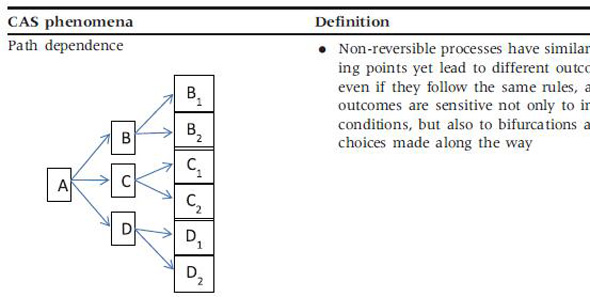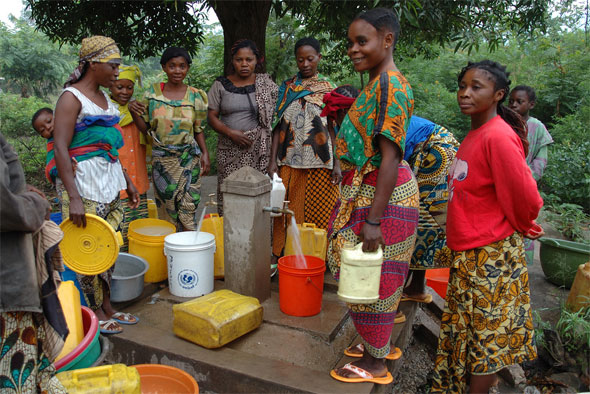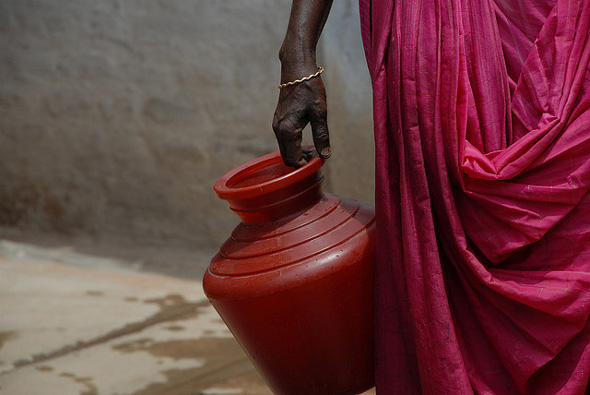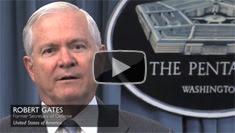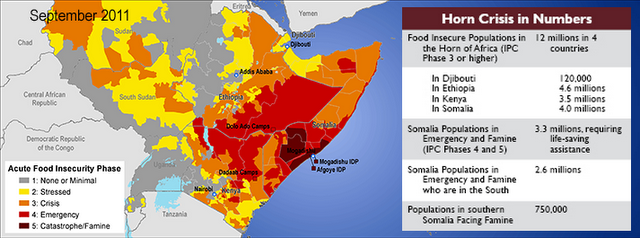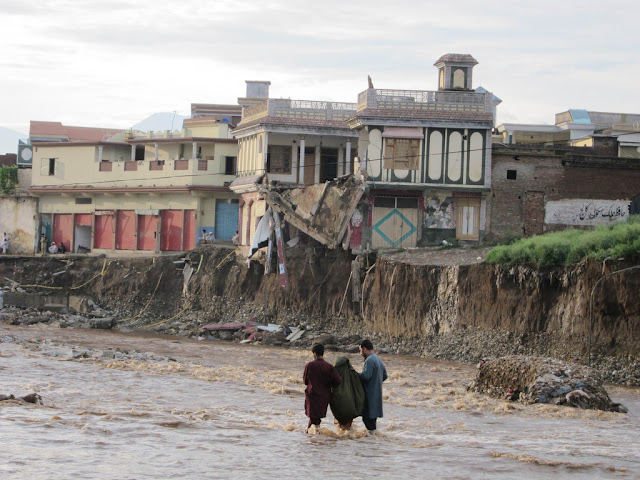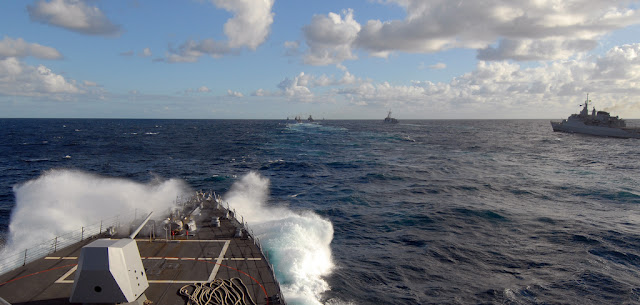Showing posts from category humanitarian.
-
Ben Ramalingam, Aid on the Edge of Chaos
The Complexity of Scaling Up
›October 11, 2011 // By Wilson Center StaffThe original version of this article, by Ben Ramalingam, appeared on Aid on the Edge of Chaos.
Despite increased prominence and funding of global health initiatives, attempts to scale up health services in developing countries are failing, with serious implications for achieving the Millennium Development Goals. A new paper argues that a key first step is to get a more realistic understanding of health systems, using the lens of complex adaptive systems.
Much ongoing work in development and humanitarian aid is based on the idea of “scaling up” effective solutions. Healthcare is one of the areas where this idea has played a central role – from the World Health Organization’s Health for All in the 1960s to UNICEF’s child healthcare programs, from rolling out HIV-AIDS, malaria and TB treatments to the package of interventions delivered to achieve the Millennium Development Goal on health.
However, despite the fact there are many cost-effective solutions to health problems faced in developing countries, many agencies are still frustrated in their attempts to deliver them at scale. This may be because of a widespread failure to understand the nature of health systems.
Continue reading on Aid on the Edge of Chaos.
Image Credit: Adapted from Table 1, “Understanding pathways for scaling up health services through the lens of complex adaptive systems,” Health Policy and Planning, Oxford University Press. -
Women and Water: Streams of Development
›“One of the things that we consistently learn is that water is a woman’s issue,” said Lisa Schechtman, WaterAid America’s head of policy and advocacy, leading off a September 23 Wilson Center on the Hill panel on gender, water, and development. Schechtman was joined in the discussion by Jae So, director of the World Bank’s Water and Sanitation Program; Christian Holmes, USAID’s Global Water Coordinator; and Geoff Dabelko, moderator and director the Wilson Center’s Environmental Change and Security Program.
Water issues affect everyone, but women often bear the brunt of water collection responsibilities, making them vulnerable to changes in access or sanitation, especially in developing countries. “Studies show that about 26 percent of a rural African woman’s time is spent collecting water,” Schechtman said. “That means that they can’t go to school, they can’t take care of their families, or go to clinics, or spend time generating income, or doing other things in their community like participating in political processes.”
What’s more, as women make the hours-long hike to get water, “they’re risking injury and sexual assault,” Schechtman added. “So there’s a really wide-ranging set of impacts, just out of the actual act of collecting water.”
The Horn of Africa: Severe Problems, Small Changes
In one town in northeastern Kenya, Holmes said women have to travel 12 miles to find water – and even then, they are drawing it from a waterhole shared with wildlife. In Ethiopia, “we have severe problems,” he said, “not the least of which is not just sanitation but also HIV and AIDS,” as HIV/AIDS patients often drink unsanitary water to take their medications. That water gives them diarrheal disease, “so they’re excreting the value of the treatment” – and women, as household caregivers, bear an ever greater burden.
In Somalia, girls drop out of school once they start menstruating because schools do not have latrines that allow them to meet their needs safely and privately. “To think that the lack of a latrine could make you drop out of school and your entire life is going to change overnight – it’s just not acceptable,” said Holmes.
In each of these cases, small changes could dramatically reduce strains on women. Holmes pointed to a USAID project in Kenya that is building wells closer to population centers and empowering women by bringing them into the decisions on developing and managing wells. In Ethiopia, NGOs are working to train women on sanitation and hygiene, which could reduce the burden of illness on women and their families. And in Somalia, the simple addition of women’s latrines at schools would mean girls can continue their education beyond puberty.
Closing the Water Gender Gap
The World Bank’s 2012 World Development Report on Gender Equality and Development recommends that development professionals “look at the gender gaps in basic endowments, like access to health, access to water resources, access to land,” and determine not just how they affect men and women differently but why those gaps exist in the first place, said Jae So.
A CARE and Swiss Development Corporation study of water services in Nicaragua found that when men realized how much of a role water-related activities played in women’s day-to-day lives, “it energized the entire community to really devote their collective resources” towards improving water management, said So.
“Water touches everything else in one’s life,” said Holmes. “You can link it to water and climate change, water and health, water and food, water and conflict, water and education – all are interwoven.”
Event ResourcesSources: The United Nations, UNICEF, USAID, WaterAid America, The World Bank.
Photo Credit: “Repatriated Mamas at the fountain,” courtesy of flickr user Julien Harneis -
Digging Deeper: Water, Women, and Conflict
›
It’s not just “carrying water from a water point, but it’s discharging responsibilities that a woman has for using and managing water which may make her vulnerable to violence and bring her into risky areas,” said Dennis Warner, senior technical advisor for water and sanitation at Catholic Relief Services (CRS), at the Wilson Center on August 29. [Video Below]
-
Gates and Winnefeld: Development a Fundamental Part of National Security
› “As we’ve learned in Iraq and Afghanistan, reconstruction, development, and governance are crucial to any long-term success – it is a lesson we forget at our peril,” said Former Secretary of Defense Robert Gates in a video address commemorating the U.S. Agency for International Development’s 50th anniversary this fall. Gates was joined by Admiral James Winnefeld, Jr., the vice chairman of the Joint Chiefs of Staff, in a post on USAID’s Impact blog to reinforce the importance of development and USAID in particular to U.S. national security.
“As we’ve learned in Iraq and Afghanistan, reconstruction, development, and governance are crucial to any long-term success – it is a lesson we forget at our peril,” said Former Secretary of Defense Robert Gates in a video address commemorating the U.S. Agency for International Development’s 50th anniversary this fall. Gates was joined by Admiral James Winnefeld, Jr., the vice chairman of the Joint Chiefs of Staff, in a post on USAID’s Impact blog to reinforce the importance of development and USAID in particular to U.S. national security.
USAID was created on November 3, 1961 as part of a total overhaul of U.S. foreign assistance by President Kennedy. From the start, President Kennedy understood that the agency would play a role not just in development abroad but in improving U.S. security as well.
The agency is marking its 50th anniversary in an environment where development and security are seen as perhaps more linked than ever.
Winnefeld described the work that USAID and the military do as going hand-in-hand, saying that “together, we play a critical role in America’s effort to stabilize countries and build responsive local governance.”
In country after country, Winnefeld said, “USAID’s development efforts are critical to our objective of creating peace and security around the world.” He added that “instability in any corner of today’s highly interconnected world can impact everyone. Development efforts prevent conflicts from occurring by helping countries become more stable and less prone to extremism.”
“For 50 years,” Gates said, “USAID has embodied our nation’s compassion, generosity, and commitment to advance our ideals and interests around the globe. It’s a commitment demonstrated every time this agency works hand-in-hand with communities worldwide to cure a child, build a road, or train a judge.”
“By improving global stability,” Winnefeld concluded, “USAID helps keep America safe.”
Sources: USAID.
Video Credit: USaidVideo. -
Jan Eliasson, Huffington Post
What Somalia Teaches Us: Sanitation, Health, and Conflict
›September 15, 2011 // By Wilson Center StaffThe original version of this article, by Jan Eliasson, appeared on Huffington Post.
The confirmation of cholera deaths in Somalia offers a chilling reminder of what happens when there is no safe water and inadequate sanitation. The refugee crisis in Somalia is fueled by the worst drought in the horn of Africa in over 60 years.
This humanitarian disaster is a glaring example of the international community’s failure to uphold basic needs and rights of some of our planet’s most vulnerable people. As we struggle to respond to this humanitarian catastrophe, we must remember that Somalis are in need of more than access to food, but also safe water, sanitation, shelter, and healthcare.
For many of Somalia’s poorest citizens, who have walked for days and miles, drinking contaminated water, and staying in crowded camps, deadly diseases including cholera may be a tragic but predictable end result. Up to 100,000 people have crowded into Mogadishu, seeking shelter, food, and water. More arrive each day in Mogadishu and in overflowing camps in neighboring Kenya.
Experts estimate that more than 29,000 children under the age of five have already died from the combination of drought, famine, and illness. Diarrhea is on the rise in overcrowded shelters where there is a shortage of safe water and large numbers of weak and malnourished children. These conditions provide a breeding ground for infectious diseases, including measles, cholera and pneumonia. On August 18th, Tarik Jasarevic, a spokesperson for the World Health Organization, said, “We don’t see the end of it.”
Continue reading on Huffington Post.
Sources: AP, The New York Times, UN.
Image Credit: “The Horn of Africa food security crisis in numbers,” courtesy of the Famine Early Warning Systems Network (FEWS NET) and USAID. -
Fistula, Stigmatization, and Development
›Although obstetric fistula may not be as widely recognized as other maternal health issues, the Fistula Foundation estimates that over two million women and girls in developing countries suffer from this condition today. The World Health Organization has labeled it as “the single most dramatic aftermath of neglected childbirth.”
Obstetric fistula is a devastating condition often resulting from obstructed labor that can cause infections, incontinence, and even paralysis. The condition largely afflicts poor, rural, and illiterate women in developing countries who lack resources and access to emergency care and surgery, and sufferers often face an additional burden of social stigma.
Economic Development and Social Standing
Poor infrastructure and poverty significantly increases the occurrence rate of obstetric fistula. Lewis Wall, in an article for The Lancet, writes that “poverty is the breeding-ground where obstetric fistulas thrive.” Wall cites early marriage, low social status of women, malnutrition, inadequately developed social and economic infrastructures, and lack of access to emergency obstetric services as being major contributors of fistulas in developing countries.
Additionally, “postponing the age of marriage and delaying childbirth can significantly reduce the risk of subjecting young women to the arduous labor that induces fistulas,” wrote Sonny Inbaraj of Inter Press Service News Agency (IPS) in an article about how fistula makes social outcasts of child brides.
In most developing societies where child marriage is common, the social standing of women is defined largely in terms of marriage and childbearing. Child marriages are typically arranged without the knowledge or consent of the girls involved. The norms emphasize a girl’s domestic roles and de-emphasize investments such as education.
Stigmatization of Fistula
There is an undeniable link between fistula and social stigmatization. Rather than receiving assistance from their families and communities, women are often ostracized and in many instances exiled from their communities. This is especially true in developing countries where “the role of women is merely limited to providing sexual satisfaction for their husbands, [and] producing children,” said Dr. Catherine Hamlin, founder of the Addis Ababa Fistula Hospital, in an interview with IPS.
“Many women and girls with fistula endure lives of shame, misery, violence, and poverty,” said Agnes Odhiambo, Africa women’s rights researcher and author of ‘I Am Not Dead, But I Am Not Living‘: Barriers to Fistula Prevention and Treatment in Kenya, in a Human Rights Watch article. Human Rights Watch has focused on fistula, recognizing that birth is a human rights issue. Ignoring the issues of women and girls only diminishes progress on human rights and sends a message that says the rights of women do not deserve adequate attention.
Prevention Efforts
Thus far the fight to end fistula has attracted various government agencies and organizations including USAID, UNFPA, EngenderHealth, Maternal Health Task Force, and the Human Rights Watch. Outstanding individuals have also played a key role in fistula prevention efforts, like Drs. Reginald and Catherine Hamlin, Australian gynecologists who came to Addis Ababa in 1959 for temporary medical work, but after hearing heart-breaking stories from fistula patients, they decided to move to Ethiopia permanently and open the Addis Ababa Fistula Hospital. As the only hospital dedicated exclusively to women with obstetric fistula, the hospital provides care free of change, and has done so since 1974.
Although fistula has gotten some support and attention, the need to scale-up the prevention initiatives has never been greater. As a result of the “poverty and the stigma associated with their condition, most women living with fistulas remain invisible to policy makers both in their own countries and abroad,” wrote Inbaraj on IPS.
“Preventing fistula and restoring women’s health and dignity requires more than good policies on paper,” said Odhiambo at Human Rights Watch. Seriously tackling the issue will require much more than traditional medical and public health interventions – prevention efforts must also take into account underlying social issues, food and economic security.
Sources: The Addis Ababa Fistula Hospital, Campaign to End Fistula, The Center for Global Development, The Fistula Foundation, Human Rights Watch, The Lancet, World Health Organization.
Photo Credit: “Hauwa’u, 25, mother from Rogogo community,” courtesy of flicker user DFID-UK Department for International Development. -
Preparing for the Impact of a Changing Climate on U.S. Humanitarian and Disaster Response
›Climate-related disasters could significantly impact military and civilian humanitarian response systems, so “an ounce of prevention now is worth a pound of cure in the future,” said CNA analyst E.D. McGrady at the Wilson Center launch of An Ounce of Preparation: Preparing for the Impact of a Changing Climate on U.S. Humanitarian and Disaster Response. The report, jointly published by CNA and Oxfam America, examines how climate change could affect the risk of natural disasters and U.S. government’s response to humanitarian emergencies. [Video Below]
Connecting the Dots Between Climate Change, Disaster Relief, and Security
The frequency of – and costs associated with – natural disasters are rising in part due to climate change, said McGrady, particularly for complex emergencies with underlying social, economic, or political problems, an overwhelming percentage of which occur in the developing world. In addition to the prospect of more intense storms and changing weather patterns, “economic and social stresses from agricultural disruption and [human] migration” will place an additional burden on already marginalized communities, he said.
Paul O’Brien, vice president for policy and campaigns at Oxfam America said the humanitarian assistance community needs to galvanize the American public and help them “connect the dots” between climate change, disaster relief, and security.
As a “threat multiplier,” climate change will likely exacerbate existing threats to natural and human systems, such as water scarcity, food insecurity, and global health deterioration, said Vice Admiral Lee Gunn, USN (ret.), president of CNA’s Institute for Public Research. Major General Richard Engel, USAF (ret.), of the National Intelligence Council identified shifting disease patterns and infrastructural damage as other potential security threats that could be exacerbated by climate change.
“We must fight disease, fight hunger, and help people overcome the environments which they face,” said Gunn. “Desperation and hopelessness are…the breeding ground for fanaticism.”
U.S. Response: Civilian and Military Efforts
The United States plays a very significant role in global humanitarian assistance, “typically providing 40 to 50 percent of resources in a given year,” said Marc Cohen, senior researcher on humanitarian policy and climate change at Oxfam America.
The civilian sector provides the majority of U.S. humanitarian assistance, said Cohen, including the USAID Office of Foreign Disaster Assistance (OFDA) and the State Department’s Bureau of Population, Refugees, and Migration. These organizations provide leadership, funding, and food aid to developing countries in times of crisis, but also beforehand: “The internal rationale [of the Office of Foreign Disaster Assistance] is to reduce risk and increase the resilience of people to reduce the need for humanitarian assistance in the future,” said Edward Carr, climate change coordinator at USAID’s Bureau for Democracy, Conflict, and Humanitarian Assistance.
The U.S. military complements and strengthens civilian humanitarian assistance efforts by accessing areas that civilian teams cannot reach. The military can utilize its heavy lift capability, in-theater logistics, and command and control functions when transportation and communications infrastructures are impaired, said McGrady, and if the situation calls for it, they can also provide security. In addition, the military could share lessons learned from its considerable experience planning for complex, unanticipated contingencies with civilian agencies preparing for natural disasters.
“Forgotten Emergencies”
Already under enormous stress, humanitarian assistance and disaster response systems have persistent weaknesses, such as shortfalls in the amount and structure of funding, poor coordination, and lack of political gravitas, said Cohen.
Food-related aid is over-emphasized, said Cohen: “If we break down the shortfalls, we see that appeals for food aid get a better response than the type of response that would build assets and resilience…such as agricultural bolstering and public health measures.” Food aid often does not draw on local resources in developing countries, he said, which does little to improve long-term resilience.
“Assistance is not always based on need…but on short-term political considerations,” said Cohen, asserting that too much aid is supplied to areas such as Afghanistan and Iraq, while “forgotten emergencies,” such as the Niger food crisis, receive far too little. Furthermore, aid distribution needs to be carried out more carefully at the local scale as well: During complex emergencies in fragile states, any perception of unequal assistance has the potential to create “blowback” if the United States is identified with only one side of a conflict.
Engel added that many of the problems associated with humanitarian assistance will be further compounded by increasing urbanization, which concentrates people in areas that do not have adequate or resilient infrastructure for agriculture, water, or energy.
Preparing for Unknown Unknowns
A “whole of government approach” that utilizes the strengths of both the military and civilian humanitarian sectors is necessary to ensure that the United States is prepared for the future effects of climate change on complex emergencies in developing countries, said Engel.
In order to “cut long-term costs and avoid some of the worst outcomes,” the report recommends that the United States:
Cohen singled out “structural budget issues” that pit appropriations for protracted emergencies in places like Iraq, Afghanistan, and Darfur against unanticipated emergencies, like the 2010 earthquake in Haiti. Disaster-risk reduction investments are not a “budgetary trick” to repackage disaster appropriations but a practical way to make more efficient use of current resources, he said: “Studies show that the return on disaster-risk reduction is about seven to one – a pretty good cost-benefit ratio.”- Increase the efficiency of aid delivery by changing the budgetary process;
- Reduce the demand by increasing the resilience of marginal (or close-to-marginal) societies now;
- Be given the legal authority to purchase food aid from local producers in developing countries to bolster delivery efficiency, support economic development, and build agricultural resilience;
- Establish OFDA as the single lead federal agency for disaster preparedness and response, in practice as well as theory;
- Hold an OFDA-led biannual humanitarian planning exercise that is focused in addressing key drivers of climate-related emergencies; and,
- Develop a policy framework on military involvement in humanitarian response.
Edward Carr said that OFDA is already integrating disaster-risk reduction into its other strengths, such as early warning systems, conflict management and mitigation, democracy and governance, and food aid. However, to build truly effective resilience, these efforts must be tied to larger issues, such as economic development and general climate adaptation, he said.
“What worries me most are not actually the things I do know, but the things we cannot predict right now,” said Carr. “These are the biggest challenges we face.”
“Pakistan Floods: thousands of houses destroyed, roads are submerged,” courtesy of flickr user Oxfam International. -
Rosemarie Calvert, Center for a Better Life
Winning Hearts and Minds: An Interview with Chief Naval Officer Admiral Gary Roughead
›May 23, 2011 // By Wilson Center StaffThe original version of this article, by Rosemarie Calvert, appeared in the Center for a Better Life’s livebetter magazine.
Few people understand “smart” power as well as Chief Naval Officer (CNO) Admiral Gary Roughead. To this ingenious, adept leader of the world’s largest and most powerful navy, it’s not just about military strategy or political science; it’s about heart. It’s about the measure of a man with regard to honor, courage and commitment. And, it’s about appreciation and respect for the natural world. As one of the U.S. Defense Department’s most powerful decision-makers, Roughead has helped mold a new breed of sailor who understands that preventing war is just as important as winning war – that creating partners is more important than creating opponents. Add mission mandates such as humanitarian assistance, disaster relief, and environmental stewardship, and it’s clear why Roughead and his brand of smart power are having a profound impact on international peace, national security, and natural security.
Engendering Environmental Advocacy
“You don’t live on the ocean and not love it. My appreciation for the environment came from a very early age – from just loving to be on the water. It’s something that’s had a very strong impact on me,” explains Roughead, who grew up in North Africa where his father worked in the oil business. He and his family lived along an uninhabited area of coastline where his father’s company built a power plant and refinery to process and transport Libya’s huge oil field finds to offshore tankers.
“We were the first people to move there; I was still in grammar school. The beauty in being the first was that the coastline was absolutely pristine. Even before school, I would get up and go skin diving. There were beautiful reefs, and fish were everywhere. The vegetation was just incredible. The company built an offshore loading area a few miles off the beach with 36-inch pipes pumping crude oil out to where these big supertankers would come in. Back then, there wasn’t a high regard for the environment, so when storms would kick-up and ships got underway in a hurry, they would just cast them off and all that oil would go into the ocean.
“Fast forward about five years, and the last time I went skin diving I didn’t see a living thing. The vegetation was dead. At that time I was visiting my folks on summer leave from the Naval Academy. There were periods when I would skin dive and then surface after being down about 35-40 feet, and my lungs would be ready to burst. I’d look up, having moved from my original location, and see this massive oil slick. And, I’d go, ‘Oh gosh…no!’ But, you didn’t have any choice. I would come home and actually have to clean the oil off with kerosene because it was caked on me.
“I saw and experienced environmental devastation, and it had an effect on me. Being at sea all the time – I love going to sea and seeing everything about it – drove me to the views I have. I really do think there’s compatibility between the Navy and the environment. We have things we must accomplish, but we can do them cleanly and responsibly. That’s what we’ve tried to demonstrate to those who have different views – that there has to be compatibility between the two.”
Continue reading on the Center for a Better Life.
Rosemarie Calvert is the publisher and editorial director of livebetter magazine and director of the Center for a Better Life.
Photo Credit: Adapted from “USS Nitze underway with ships from U.S. Navy, Coast Guard and foreign navies,” courtesy of flickr user Official U.S. Navy Imagery.


